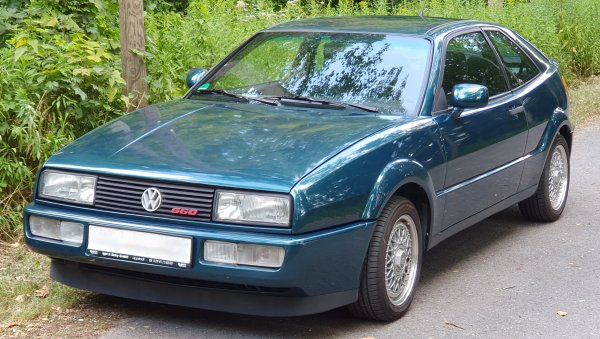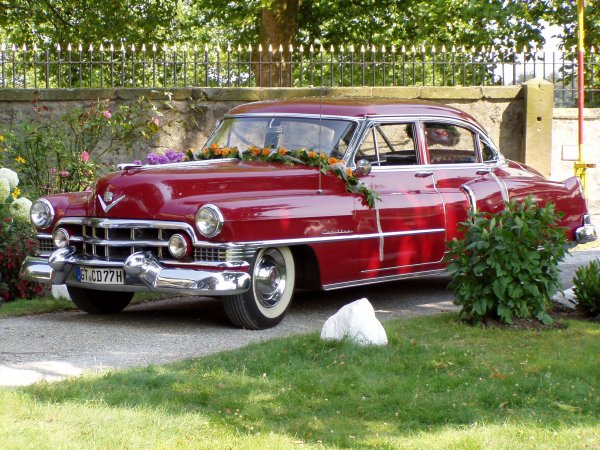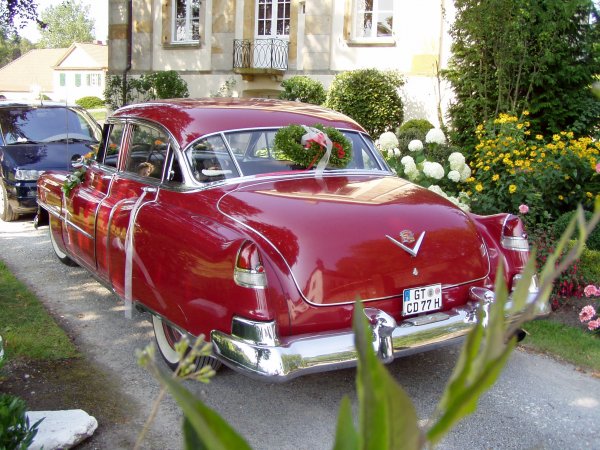Dear Bill,
I am happy for you that you call a PX-3 your own. I would also like to wish you a PX-1.
Maybe you will find another one and will have a lot of fun with it.
It is like with the beautiful old automobiles. People maintain and care for them. They only wash it by hand.
And many people enjoy it - especially in today's fast world.
I could call over 35 years a 1951er Cadillac Sedan de Ville my own. At that time it cost only 6.000 US$.
View attachment 56955
This is my Lady --- I called her Cathy
View attachment 56956
It also had seat heating, electric windows, 5-speed automatic transmission and excellent air conditioning.
It had a beautiful tube radio with a great sound - you wouldn't believe it.

It had beautiful whitewall tires that are no longer available today.
With the sound of his big V-8 engine I enjoyed my friends and my whole neighborhood.
Most of all my gas station attendant was happy when I had to refuel.
When a policeman stopped me, it was only to sit down in this beautiful Classic-Car
and dream of the good old days for a short moment.
I drove over 30 weddings with it and I made many couples happy.
"My summary is that a Mercedes S-class of today, or a Bugatti, or a Maybach
are not much better either. They just roll across the streets - like my 51 Cadillac...
So there is no good reason to buy a modern car of today" 

with my best regards,
Rainer
P.S.
If you have more concrete interest in my technology, come and visit me
then we have time to talk shop.
I mean it.
I'm not seeing the advantage of this compared to say my Yamaha PX-3 tonearm system. On both your system and mine the tonearm MUST be driven a little bit out of tangent before tracking correction will occur. Is this not true?
Granted, your system will pickup a smaller deviation from tangent than mine but it still is relying on the stylus to drag the tonearm out of tangent. On the Yamaha PX-3 the maximum it will be out of tangent is +or- 0.15 degree before correction occurs.
From what I understand you are using a more sophisticated way of measuring the tangency deviation and applying correction sooner. In both cases though, the stylus still has to drag the tonearm for it to be detected and corrected.
As a machine tool CNC repair technician I can appreciate the technology that you have incorporated in this system but I question the value of it. As I see it, you have basically created a more accurate version of what Yamaha created back in the early 1980's.
Lot's of folks on this forum will poo poo the Yamaha PX-3 because it only cost $600.00 back in 1982 and they have read bad things about linear trackers. And yes, some linear trackers did have problems with noise in the tracking motor transmissions feeding back into the tonearms.
Yamaha PX-3 do not have any such problems and are equipped with a very nice direct drive slot-less type motor. The earlier PX-2 and the ultra rare PX-1 were even better built.
If I have misunderstood the concept of how this works than please correct me. I'm all ears.
And BTW, I'm a huge fan of linear trackers, never understood reading the grooves with a pivoting arm when the masters are cut with a linear tracker. Kind of odd.
BillWojo
Hi Bill,
Your Yamaha is a very cool, stylish device.
It is like with me my 30 years old VW Corrado.
I posted a fresh picture after it is refurnished for a price, higher than what I paid for it when it was new.

I love this car. OK, if I'm listening to my wife, I'm crazy.


Why do I tell this?
You are absolutely right, to control a position you need to check it and a deviation need to be corrected.
And exactly this is the point. The quality of the position is directly related to the accuracy of detection, which needs to be as good as possible.
I agree with you, for sure the Yamaha engineers created a device, limited by the technologies of those days as well as by the financial restrictions of the controllers from Yamaha.
We are developed a highly accurate, laser-controlled motion system with special stealth mode drivers.
With this environment, I developed a special closed-loop-control which permanently adjusts the speed of the arm in a big range down to a very very very low speed. But the movement will never stop, to avoid slip-stick noises (in case they could appear).
This leads out to the point of records which are not perfectly centered.
In this case, the arm normally has to change its direction.
We do have an SW implemented which is able to drive the arm according to read such kind of records, but the sound disadvantages coming from the record are worth compared to those coming from the wrong angle. So why to do it? Let's read the good records with the perfect technology. (We can discuss this

)
What I can tell you is, that all our products are limited only by the available technology of today.
We exclusively using state of the art, high-end technologies, respecting the actual knowledge of physics and nobel materials.
Even in case, we would produce a higher volume of this arms (which is not planned), it will never reach nor even come close to the price you paid for your whole device, simply because of the laser is more expensive.

Our aim is to check and stay on top of the physical and technological borders of today.
All our devices are the results out of this thinking.
Especially the DTT-X stand-alone Linear Trackers are, compared to my Corrado at least a Bentley or an S-Class.
Finally and honestly, we do not limit our self, our ideas and the chosen technology because of costs, which is a big advantage.
Who can say this, working in a bigger company?
Of course, we do not waste money, I'm coming from the automotive industry and exactly know what it means to balance technology and costs.
But in our the Dereneville projects, the focus and priorities are clear and 100% on technologies and possibilities.
Maybe my article is partly a bit off topic, but I wanted to write this because I understand and like your statement as well as your device.
Have a nice weekend and many greetings from Lippstadt...
...Hannes










